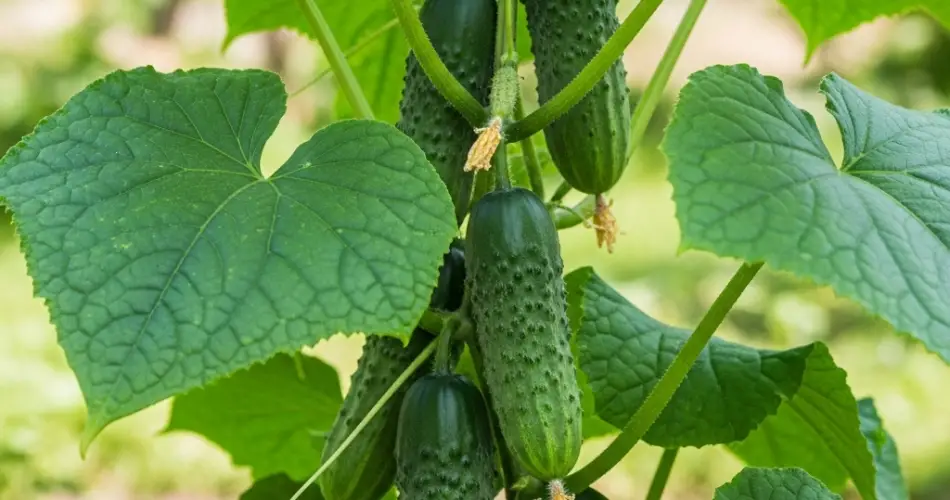Cucumbers are among the most rewarding vegetables to grow. With their crisp texture and refreshing taste, they’re a garden favorite for everything from salads to pickles. But beyond just the harvest, cucumber plants offer vibrant blooms that can add life and color to your garden or greenhouse all year long—if cared for correctly.
Growing cucumbers continuously doesn’t require advanced gardening skills. With the right techniques, it’s entirely possible to enjoy blossoms and even fruit well beyond the traditional summer season. Here’s how to nurture cucumbers for healthy growth and vibrant blooms all year round.
Choose the Right Cucumber Variety
Not all cucumbers are created equal when it comes to year-round growing. For continual blooming, opt for parthenocarpic cucumber varieties—these do not require pollination and are ideal for indoor growing or greenhouses.
Look for varieties labeled:
-
‘Iznik’
-
‘Baby Persian’
-
‘Socrates’
-
‘Picolino’
These are compact, fast-growing, and suited for both container gardens and vertical growing systems.
Create the Ideal Environment
Cucumbers are heat-loving plants that thrive in warm, sunny conditions. To keep them blooming year-round, you need to simulate their preferred climate as closely as possible.
Outdoors: In warm regions, cucumbers can be grown nearly year-round. In cooler climates, grow during the warmer months and shift to greenhouse or indoor growing in fall and winter.
Indoors/Greenhouses: Provide consistent warmth—ideally between 70–85°F (21–29°C). Use grow lights to supplement sunlight during the darker months. Cucumbers need at least 12–14 hours of light per day for blooming.
Humidity is also important. Aim for moderate humidity to prevent blossom drop. If growing indoors, use a humidifier or regularly mist plants.
Prepare Nutrient-Rich Soil
Healthy soil is the foundation of thriving cucumber plants. Choose well-draining, loamy soil rich in organic matter. Before planting, work in compost or aged manure to enrich the growing medium.
In containers, use a high-quality vegetable potting mix and ensure the pot has drainage holes. Cucumber roots dislike soggy soil.
Soil pH should be slightly acidic to neutral—between 6.0 and 7.0. A simple soil test kit can help you monitor and adjust pH as needed.
Plant and Space Correctly
Plant cucumber seeds or transplants after the risk of frost has passed (for outdoor planting). If growing indoors, they can be started at any time.
Space plants 12–18 inches apart, or use one plant per container. Cucumbers love to climb, so provide a sturdy trellis or vertical support. This not only saves space but also improves airflow and makes flowers and fruits more accessible.
Water Wisely
Cucumbers need consistent moisture to support both foliage and flower development. Keep the soil evenly moist, especially during blooming and fruiting periods.
Tips for effective watering:
-
Water at the base, not overhead, to reduce fungal risk.
-
Use mulch to retain soil moisture and prevent weeds.
-
Avoid letting the soil dry out completely between waterings.
During indoor growth, monitor humidity. If air is dry, place a shallow dish of water nearby or mist plants lightly.
Feed for Continuous Blooms
Cucumbers are heavy feeders, especially during flowering and fruiting. Use a balanced fertilizer (e.g., 10-10-10) or a fertilizer specially formulated for vegetables.
Apply fertilizer every 2–3 weeks during the active growing season. If growing year-round, reduce feeding in the dormant or slower growth periods, usually winter months.
Boost flowering with phosphorus-rich feeds or compost teas that encourage bloom production.
Prune and Train Vines
Regular pruning promotes airflow, reduces disease, and encourages more blooms. Trim off dead or yellowing leaves, and pinch back excessive lateral growth.
Training the vines vertically not only saves space but also directs the plant’s energy toward productive growth. Use soft ties or clips to secure vines to a trellis or support.
Watch for Pests and Disease
Cucumbers can be prone to pests like aphids, spider mites, and whiteflies—especially when grown indoors or in greenhouses. Use organic insecticidal soap or neem oil if infestations appear.
Fungal issues such as powdery mildew can develop in high humidity. Ensure good ventilation, water in the morning, and avoid splashing leaves.
Regular inspection and early intervention are key to maintaining a healthy blooming cycle.
Rotate and Refresh Plants
Even with ideal care, individual cucumber plants have a natural life cycle and may slow down in bloom production after several months. Plan to rotate new plants into your growing system every few months to maintain continuous blooms.
Start new seeds or transplants while older plants are still producing to ensure a seamless transition and year-round flowering.
Final Thoughts
With a little planning and care, cucumbers can provide not only a delicious harvest but also vibrant, cheerful blooms throughout the year. By choosing the right varieties, simulating ideal growing conditions, and offering consistent care, you can enjoy a steady supply of greenery, flowers, and fruit in your garden, greenhouse, or even indoors.
Growing cucumbers is a satisfying project for beginners and experienced gardeners alike—and with the proper setup, you can keep the cycle going, season after season.



